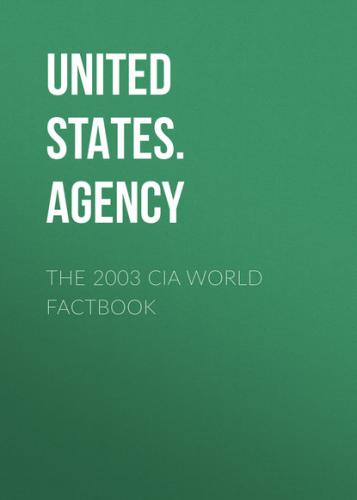Railways:
total: 2,571 km (764 km electrified)
standard gauge: 1,565 km 1.435-m gauge
narrow gauge: 961 km 1.000-m gauge; 22 km 0.750-m gauge
dual gauge: 23 km combined 1.435-m and 1.000-m gauges (three rail
system) (2002)
Highways:
total: 117,000 km
paved: 107,406 km (including 470 km of expressways)
unpaved: 9,594 km (1999 est.)
Waterways:
80 km
note: system consists of three coastal canals including the Corinth
Canal (6 km) which crosses the Isthmus of Corinth connecting the
Gulf of Corinth with the Saronic Gulf and shortens the sea voyage
from the Adriatic to Peiraiefs (Piraeus) by 325 km; there are also
three unconnected rivers
Pipelines:
gas 1,531 km; oil 108 km (2003)
Ports and harbors:
Alexandroupolis, Elefsis, Irakleion (Crete), Kavala, Kerkyra,
Chalkis, Igoumenitsa, Lavrion, Patrai, Peiraiefs (Piraeus),
Thessaloniki, Volos
Merchant marine:
total: 813 ships (1,000 GRT or over) 29,173,608 GRT/51,184,723 DWT
note: includes some foreign-owned ships registered here as a flag of
convenience: Ireland 1, Japan 1, Liberia 1, Norway 1, Panama 2,
Russia 1, Saudi Arabia 1, United Kingdom 1 (2002 est.)
ships by type: bulk 289, cargo 59, chemical tanker 32, combination
bulk 6, combination ore/oil 4, container 47, liquefied gas 7,
passenger 14, petroleum tanker 281, refrigerated cargo 1, roll
on/roll off 18, short-sea passenger 49, specialized tanker 4,
vehicle carrier 2
Airports:
79 (note - new Athens airport at Spata opened in March 2001) (2002)
Airports - with paved runways: total: 66 over 3,047 m: 6 2,438 to 3,047 m: 15 914 to 1,523 m: 17 under 914 m: 9 (2002) 1,524 to 2,437 m: 19
Airports - with unpaved runways: total: 13 914 to 1,523 m: 3 under 914 m: 10 (2002)
Heliports: 7 (2002)
Military Greece
Military branches:
Hellenic Army, Hellenic Navy, Hellenic Air Force, Police, National
Guard
Military manpower - military age:
21 years of age (2003 est.)
Military manpower - availability:
males age 15–49: 2,662,208 (2003 est.)
Military manpower - fit for military service:
males age 15–49: 2,026,409 (2003 est.)
Military manpower - reaching military age annually:
males: 74,650 (2003 est.)
Military expenditures - dollar figure:
$6.12 billion (FY99/00 est.)
Military expenditures - percent of GDP:
4.91% (FY99/00 est.)
Transnational Issues Greece
Disputes - international:
Greece and Turkey have resumed discussions to resolve their complex
maritime, air, territorial, and boundary disputes in the Aegean Sea;
Cyprus question with Turkey; dispute with The Former Yugoslav
Republic of Macedonia over its name
Illicit drugs:
a gateway to Europe for traffickers smuggling cannabis and heroin
from the Middle East and Southwest Asia to the West and precursor
chemicals to the East; some South American cocaine transits or is
consumed in Greece; money laundering related to drug trafficking and
organized crime
This page was last updated on 18 December, 2003
======================================================================
@Greenland
Introduction Greenland
Background:
The world's largest non-continental island, about 81% ice-capped,
Greenland was granted self-government in 1978 by the Danish
parliament. The law went into effect the following year. Denmark
continues to exercise control of Greenland's foreign affairs.
Geography Greenland
Location:
Northern North America, island between the Arctic Ocean and the
North Atlantic Ocean, northeast of Canada
Geographic coordinates:
72 00 N, 40 00 W
Map references:
Arctic Region
Area:
total: 2,166,086 sq km
land: 2,166,086 sq km (410,449 sq km ice-free, 1,755,637 sq km
ice-covered) (2000 est.)
Area - comparative:
slightly more than three times the size of Texas
Land boundaries:
0 km
Coastline:
44,087 km
Maritime claims:
continental shelf: 200 NM or agreed boundaries or median line
exclusive fishing zone: 200 NM or agreed boundaries or median line
territorial sea: 3 NM
Climate:
arctic to subarctic; cool summers, cold winters
Terrain:
flat to gradually sloping icecap covers all but a narrow,
mountainous, barren, rocky coast
Elevation extremes:
lowest point: Atlantic Ocean 0 m
highest point: Gunnbjorn 3,700 m
Natural resources:
zinc, lead, iron ore, coal, molybdenum, gold, platinum, uranium,
fish, seals, whales, hydropower, possible oil and gas
Land use: arable land: 0% permanent crops: 0% other: 100% (1998 est.)
Irrigated land:
NA sq km
Natural hazards:
continuous permafrost over northern two-thirds of the island
Environment - current issues:
protection of the arctic environment; preservation of the Inuit
traditional way of life, including whaling and seal hunting
Geography - note:
dominates North Atlantic Ocean between North America and Europe;
sparse population confined
